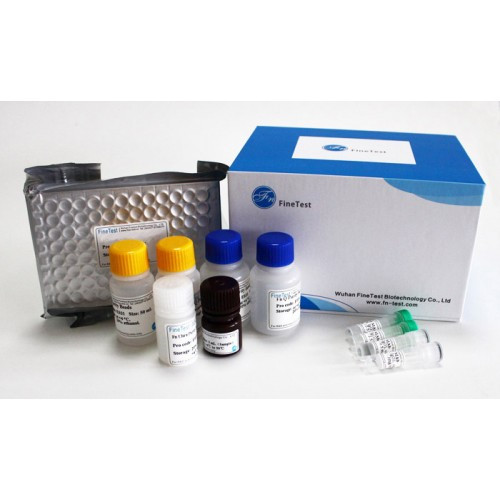Product Description
Recombinant Human Small ubiquitin-related modifier 4 (SUMO4) is available at Gentaur for Next week Delivery.
Gene Name: SUMO4
Alternative Names : Ubiquitin-like protein which can be covalently attached to target lysines as a monomer. Does not seem to be involved in protein degradation and may modulate protein subcellular localization, stability or activity. Upon oxidative stress, conjugates to various anti-oxidant enzymes, chaperones, and stress defense proteins. May also conjugate to NFKBIA, TFAP2A and FOS, negatively regulating their transcriptional activity, and to NR3C1, positively regulating its transcriptional activity. Covalent attachment to its substrates requires prior activation by the E1 complex SAE1-SAE2 and linkage to the E2 enzyme UBE2I.
Expression Region : 1-95aa
AA Sequence : MANEKPTEEVKTENNNHINLKVAGQDGSVVQFKIKRQTPLSKLMKAYCEPRGLSVKQIRFRFGGQPISGTDKPAQLEMEDEDTIDVFQQPTGGVY
Sequence Info : Full Length of BC130305
Tag Info : N-terminal GST-tagged
Theoretical MW : 37.7 kDa
Storage Buffer : Tris/PBS-based buffer, 5%-50% glycerol. If the delivery form is lyophilized powder, the buffer before lyophilization is Tris/PBS-based buffer, 6% Trehalose, pH 8.0.
Endotoxin Level : Not tested-
Biological Activity : Not tested
Storage : Short term: -20°C; Long term: -80°C. Minimize freeze and thaw cycles.
Research Area : Cell Biology
Restriction : For Research Use Only. Not for use in diagnostic procedures, drug use, or for administration to humans or animals.
Relevance : Small ubiquitin-like protein 4
Function : Ubiquitin-like protein which can be covalently attached to target lysines as a monomer. Does not seem to be involved in protein degradation and may modulate protein subcellular localization, stability or activity. Upon oxidative stress, conjugates to various anti-oxidant enzymes, chaperones, and stress defense proteins. May also conjugate to NFKBIA, TFAP2A and FOS, negatively regulating their transcriptional activity, and to NR3C1, positively regulating its transcriptional activity. Covalent attachment to its substrates requires prior activation by the E1 complex SAE1-SAE2 and linkage to the E2 enzyme UBE2I.
Involvement in disease :
Subcellular location :
Protein Families : Ubiquitin family, SUMO subfamily
Tissue Specificity : Expressed mainly in adult and embryonic kidney. Expressed at various levels in immune tissues, with the highest expression in the lymph node and spleen.
Paythway :
Uniprot ID : Q6EEV6
 Euro
Euro
 British Pound
British Pound
 US Dollar
US Dollar








